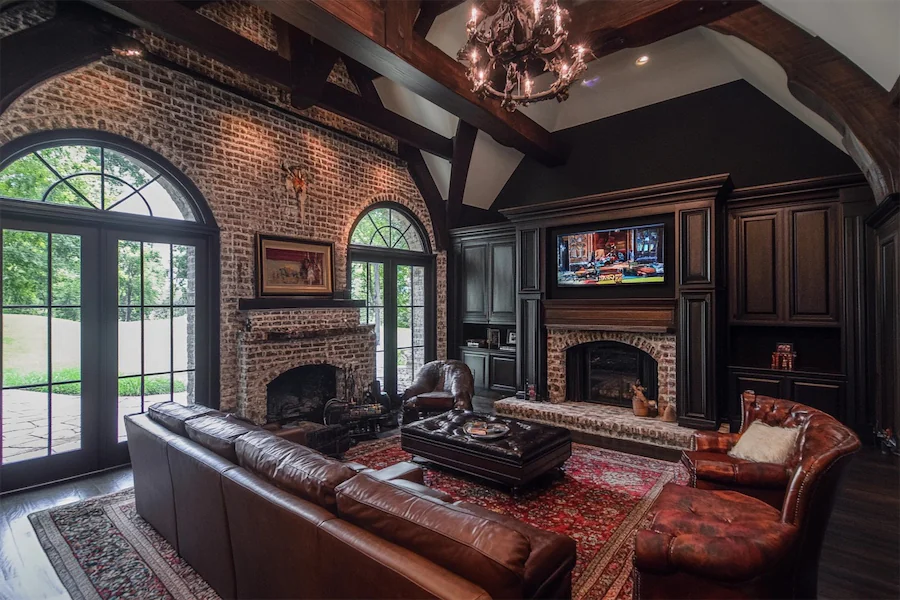A Gothic Revival entertainment room combines the dramatic and intricate elements of Gothic architecture with modern amenities, creating a unique and atmospheric space for leisure and social gatherings.
History and Origins of Gothic Revival Design
Gothic Revival, also known as Victorian Gothic or Neo-Gothic, emerged in the late 18th century as a reaction against the neoclassical styles prevalent at the time. It sought to revive the architectural and decorative elements of the medieval Gothic period, characterized by pointed arches, ribbed vaults, and intricate tracery. This movement gained prominence in the 19th century, influencing architecture, interior design, and decorative arts.
Key Features of a Gothic Revival Entertainment Room
- Pointed Arches: Incorporate pointed arch designs in doorways, windows, and furniture to evoke the quintessential Gothic aesthetic.
- Vaulted Ceilings: If possible, design the room with vaulted ceilings to create a sense of height and grandeur, reminiscent of Gothic cathedrals.
- Rich Color Palette: Utilize deep, moody colors such as burgundy, navy, and forest green, complemented by metallic accents in gold or brass to enhance the opulent atmosphere.
- Ornate Detailing: Incorporate intricate woodwork, decorative moldings, and wrought iron elements to add depth and texture to the space.
- Stained Glass: Use stained glass windows or decorative panels to introduce colorful, diffused lighting and authentic Gothic charm.
Applications of Gothic Revival Design in Entertainment Rooms
- Home Theater: Create a dramatic home theater with dark walls, plush seating, and Gothic-inspired decor to provide an immersive viewing experience.
- Game Room: Design a game room featuring Gothic-style furniture, such as a billiards table with ornate carvings, to blend entertainment with historic elegance.
- Music Room: Set up a music room with Gothic architectural elements, providing an inspiring environment for musical pursuits.
Considerations When Designing a Gothic Revival Entertainment Room
- Balance: While embracing Gothic elements, ensure the room remains inviting by balancing dark colors with adequate lighting and comfortable furnishings.
- Authenticity: Incorporate authentic or high-quality reproduction pieces to maintain the integrity of the Gothic Revival style.
- Modern Integration: Seamlessly integrate modern entertainment technology without compromising the historical aesthetic.
Conclusion
A Gothic Revival entertainment room offers a distinctive and enchanting space that marries historical design with contemporary functionality. By thoughtfully incorporating key Gothic elements and balancing them with modern comforts, you can create an entertainment area that is both captivating and enjoyable.
